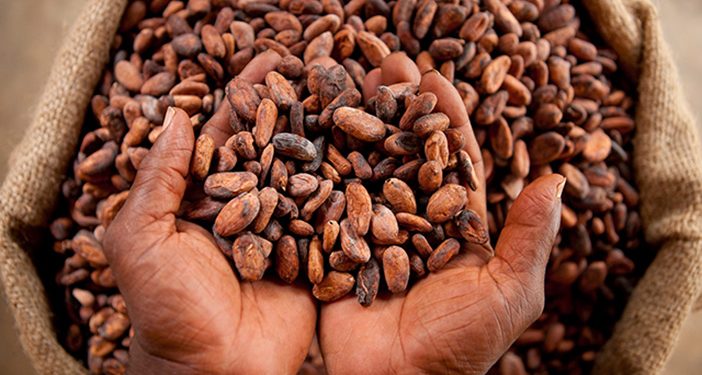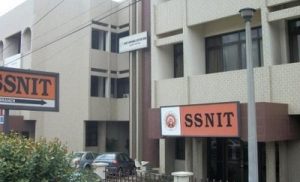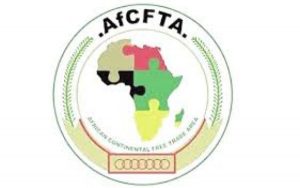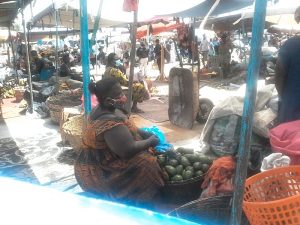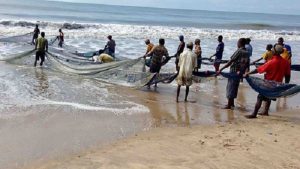Last week, COCODOD ‘s head office in Accra Ghana was brimming with excitement as its chieftains struggled to contain the news that having crunched the latest data, they were now expecting a record large cocoa harvest for the 2020/21 crop season.
While favorable weather has played a part in putting Ghana on the cusp of its biggest ever harvest government interventions in the sector, including new ones introduced by the Board’s current management in 2017 has also boosted output for the crop season.
Cocoa purchases graded and sealed by the industry regulator had reached 981,222 tons as of June 17.
Chieftains at COCOBOD are confident that this year’s total production will at least match and most likely exceed the previous record production level of 1.025 million tons recorded a decade ago, in 2011.
Indeed, the Ghana Cocoa Board has revised its production target to 1.1 million tons for the season that ends in September, although this not yet been announced formally to the public. That compares with the board’s initial goal of 900,000 tons as announced in August last year, just as the season was about to begin. This projection was a 5.8 percent increase over the projection for the 2019/20 season.
In 2019/2020, Ghana is estimated to have produced about 800,000 tons of cocoa beans, a decrease from approximately 812,000 tons in 2018/2019. This disappointing return cast a pall over COCOBOD’s reform efforts encouraging its critics to doubt the production target for the current crop season.
But now the sector’s actual performance is blowing away all the criticism.
Even if it falls a little short of the revised production target, cocoa industry analysts point out that it will, in reality still amount to record high production. The 1.025 million tonnes officially recorded a decade ago was in part actually the result of smuggled cocoa into Ghana from neighbouring Cote ‘d’Ivoire – the only country in the world that produces more cocoa than Ghana itself – due to ongoing civil strife in that country at the time and a higher real price in Ghana.
Although this was not proved it was a widely accepted fact, denied only by Ghana’s government at the time, which wanted to claim record local production to gain political mileage from being associated with such an impressive feat. It has been estimated – but never confirmed – that as much as 100,000 bags of cocoa were smuggled into Ghana during that crop season, which would have brought that year’s real total production to below one million tonnes.
The upward revision of the production target due to much higher than expected output in this crop season justifies actions taken by COCOBOD over the past four years, during which policy emphasis has shifted from maximizing the size of land under cocoa cultivation to productivity per acre, with state support focused primarily on the more productive farms. About a third of Ghana’s cocoa farms acreage has been suffering from aging trees and farmers among other production constraining issues.
Ghana’s cocoa board is implementing measures including hand pollination to improve productivity.
But pricing is proving key as well. Over the past few years, the global markets price for cocoa has been struggling and indeed government only resisted the temptation to lower the official producer price because such a move is seen as politically incorrect in Ghana. While government has been able to fall back on the cedi’s depreciation against the United States Dollar to maintain the local producer price despite falls in the international market price, the stability of the exchange rate in recent times has taken this option off the table.
However, the introduction of a US$400 a ton Living Income Differential (LID) by Ghana and Cote d’Ivoire in collaboration with each other has enabled government to raise the producer price significantly for the 2020/21 crop season, the first such major increase in over half a decade.
President Akufo-Addo himself, on September 24, 2020, announced Ghana’s new producer price at GH₵10,560.00 per metric tonne or sixteen 64kg bags of the produce.
The price for the 2020/21 Main Crop is a 28-percent increase over the 2019/20 season farm gate price of GHc515 per bag and it included for the very first time the US$25 per bag Living Income Differential paid by cocoa buyers on cocoa from Ghana and Cote d’Ivoire.
But while this has given cocoa farmers a bigger incentive to produce, it is the policy interventions being introduced by COCOBOB that is facilitating actual increases. COCOBOD has begun rehabilitating diseased and over-aged cocoa farms across the country.
This forms part of strategic and long term measures in a bid to increase the country’s production of cocoa to an estimated 1.5 million tonnes in the next five years.
Currently, it is estimated that Ghana has more than 2.5 million hectres of cocoa areas of which about 1.45 million hectres are considered to be productive areas.
The Ghana Cocoa Board, armed with the first tranche of a US$600 million medium term loan secured from a consortium of international lenders led by the African Development Bank, has begun the first step towards a fundamental restructuring of how cocoa farmers in the country are supported in their activities through the provision of production inputs and agricultural extension services.
This first step comes in the form of the creation of what it calls the Cocoa Management System, a comprehensive database which captures the details of cocoa farms and their owners nationwide. It will also capture information about product and service providers, their capacities, reach and product/service pricing, with the ultimate goal of matching them with the cocoa farms that need those products and services.
This is a crucial first step towards replacing heavily subsidized state support for cocoa farmers with private sector support on commercial terms, which would expectedly be far more efficiently delivered, in part because it will be guided by information provided through the CMS.
The pilot phase of the data gathering exercise required to establish the CMS has been completed, covering about 1,000 cocoa farmers. The next step is to extend the data gathering to cover the entire cocoa farming industry, comprising 673,377 identified farms, spread across 1,404,388.27 hectares of land, cultivated by some 800,000 households. It is also gathering information on purchasing clerks and their locations as well as the various privately owned technical support service providers and production input (such as fertilizers and pesticides) providers. Altogether COCOBOD hopes to register data on 1.2 million individual farmers onto the system.
The exercise is costing US$10.69 million and is being financed out of the US$200 million second tranche of the US$600 AfDB led syndicated medium term loan, which COCOBOD has down.
Registered farmers are to be issued with Cocoa Identification Cards that will be linked to the National Identification System with cards becoming primary identification documents with which the farmers can access production inputs and extension services, initially from the state at subsidized rates but ultimately from private enterprises on commercial terms. Importantly, registration onto the CMS will provide private suppliers with comfort in providing the farmers with inputs and services on credit terms and will provide commercial financiers with comfort in providing short term credit financing towards production.
The key to the targeted production increases though is COCOBOD’s ambitious programme towards doubling – and in some cases tripling – productivity per hectare as well as expanding farmland under cultivation in order to provide farmers with the financial wherewithal to afford the products and services they need for production, on commercial terms.
Hitherto, COCOBODs heavy subsidization of cocoa production inputs and services has left it with accumulated losses running into several millions of cedis, which are still being continuously refinanced at high domestic interest rates, a situation recognized by the Board’s current management as unsustainable and therefore in need of being rectified.
The CMS will be able to match farms and the providers of their production input, extension service and financing needs, with registration on the database serving as an assurance that financial, input and service credit can and will be repaid from revenues earned from eventual cocoa bean sales.
The forecast production for the current crop season, if achieved would bear testimony to the prudence of COCOBOD;s ongoing strategy of focusing on increasing productivity in the best quality acreages under production rather than trying to increase output everywhere including the least productive third of cocoa farmland under cultivation, which is producing sharply diminishing output. It also evidences the success of the industry facilitator’s mass hand pollination initiative introduced a couple of years ago to supplement its mass pesticide spraying exercise.
However, Ghana and neighboring Ivory Coast, which produce almost 70% of the world’s cocoa, have expanded output just as COVID 19 pandemic locked down cities around the world, hurting demand. This, plus the implementation of a US$400 a tonne Living Income Differential imposed by the world’s two biggest cocoa producers have reduced demand on international cocoa markets with several major international chocolate makers opting to surreptitiously by their cocoa through third parties using unauthorized channels. Indeed this led to a confrontation between the two countries and some of the world’s biggest chocolate makers such as Mars Wrigley.
Indeed, while production is increasing, a commensurate increase in actual sales is proving harder to achieve as global demand has slumped due to faltering demand for chocolate in the face of COVID 19 – instigated economic slowdown. Added to this, are problems created by the efforts of some major chocolate producers to evade paying the US$400 per tonne Living Income Differential (LID) demanded by Ghana and Cote d’Ivoire who between them account for over 60 percent of global cocoa production. While all the major chocolate makers publicly declare their support for LID which aims to improve the incomes of rural farmers in both countries, several of them have resorted to underhand tactics to avoid paying the agreed price premium.
A couple of months ago meetings were held between government and cocoa industry regulators from both Ghana and Cote d’Ivoire, and officials from Mars Wrigley, the world’s biggest chocolate confectioneries manufacturer to resolve lingering issues relating to the implementation of the US$400 a tonne Living Income Differential (LID) for cocoa purchased from the two countries. Ghana’s representation was led by COCOBOD while Mars Wrigley’s was led by Barry Parkin, its Chief Procurement & Sustainability Officer.
It is anticipated that those meetings will set off similar meetings with representatives of some of the other leading global chocolate manufacturers such as Hershey and Cargill, as the world’s two biggest cocoa producers and their biggest customers seek to calm tensions and resolve disputes resulting from the implementation of LID at the start of the 2020/21 cocoa crop season.
Although all the major cocoa buyers had agreed to abide by the 2019 agreement to pay LID as a premium over and above the global market price, effective from last year, both Ghana and CIV have since caught several of them trying to evade the payments by buying through unauthorized third party sources. This led to a face off late last year during which both countries cancelled their cocoa sustainability programme agreements with some major chocolate firms.
Mars Wrigley, which initiated the recent talks, was one of them but the company quickly engineered a resolution.
But recent findings by six international civil society platform in the cocoa sector have revealed that some chocolate companies are still failing to pay the living income differential meant to improve the wellbeing of farmers in Ghana and Cote d’Ivoire.
The Easter Scorecard ranking the performance of global chocolate companies reveal many of them are still shortchanging farmers in Ghana and Cote d’Ivoire by not paying what farmers deserve.
The 2021 Easter Scorecard ranks and grades chocolate companies on key sustainability issues.
The key sustainability issues are human rights due diligence, transparency and traceability, living income, child labour, deforestation and climate, and agro-forestry.
Managing campaigner for EcoCare Ghana, Obed Owusu-Addai says the majority of the chocolate companies that were assessed are only paying the base rate determined by the international market and are not paying extra to support the living income of farmers.
“Ghana and Cote D Ivoire managed to get $400 dollars extra money as living income differential for farmers, but what we found out was that these multinationals are using excuses such as COVID pandemic to evade the payment of this extra income,” he explains.
The survey developed by working together, Mighty Earth, Green America, INKOTA, National Wildlife Federation and Be Slavery Free (Australia and The Netherlands) was sent to the chocolate companies to make an input on the issue.
Mr. Owusu-Addai says the companies were selected from the largest cocoa traders and chocolate manufacturers in the industry to smaller innovative companies.
He asserts that many of the chocolate companies are not doing enough to improve the livelihood of cocoa farmers given that 65 percent of cocoa comes from Ghana and Cote D’Ivoire.
He points out that of the 60 chocolate companies sampled in the survey, only few scored high in the key indicators they were marked against.
“We must begin to question these multinational companies when they come with the sustainability programmes they advertise seeking to improve the livelihood of farmers.”
Managing campaigner for EcoCare Ghana also says the chocolate manufacturing companies are not doing enough to address the issue of child labour.
“The ultimate reason why parents take their children to the farm is because of poverty. These multinationals are making billions from the cocoa but they are not investing in the farmers,” he asserts.
He says that the multinationals are also not investing in monitoring programs to curb the practice of child labour on cocoa farms
Cocoa Sustainability programmes are initiatives through which Ghana and CIV commit to the eradication of child labour and undue deforestation in their respective cocoa industries in order to ensure the industry’s sustainability enabling their chocolate making trade counterparties to claim they buy their cocoa only from countries that engage in ethical, sustainable cocoa farming and labour practices.
Deforestation is a major issue in Côte d’Ivoire and Ghana, which together produce nearly two-thirds of the world’s supply of cocoa. Côte d’Ivoire and Ghana respectively lost 25% and 8% of their primary forest between 2002-2019, with a significant portion of deforestation due to cocoa farming.
To end deforestation and restore forest areas, the governments of Côte d’Ivoire and Ghana and 35 leading cocoa and chocolate companies have joined together in the Cocoa & Forests Initiative since 2017.
Mars Wrigley claims that it is committed to paying LID in full to support cocoa farmers and will source over 165,000 metric tonnes from the two countries during the current crop season, this translating into LID payments to farmers in excess of US$65 million.
However, at the recent meetings, Mars Wrigley called on both Ghana and CIV to ensure a level playing field by ensuring that all its competitors also pay LID to prevent them from having a distinct cost advantage. Towards this, the company will commit to vocally supporting compulsory LID payments by all industry players around the world.
The talks and resultant agreements have been welcomed by both sides. Ghana and CIV have faced problems selling their cocoa with LID added on as COVID 19 has instigated a slump in worldwide demand for chocolate which has put downward pressure on cocoa prices on international markets.
Meanwhile, the major chocolate makers have faced anger from retail consumers – particularly in the western hemisphere where most of their sales are made – who have threatened to boycott their products if Ghana and CIV cancel their cocoa sustainability programme agreements.
The record harvest could widen a global surplus of the chocolate-making ingredient and put further downward pressure on international market prices. However, Ghana is making substantial revenue gains both for the state treasury and for its underpaid farmers. Last week COCOBOD finalized negotiations to take a US$2 billion loan from a syndicate of international banks, this year’s version of its annual receivables backed loan facility. Instructively in the past few years, the size of this facility has rarely exceeded US$1.5
Although details of the terms of the latest version of this annual financing – the largest annual agricultural financing in sub-Saharan Africa – are not yet in the public domain they are believed to be similar to those applicable on last year’s US$1.3 billion financing facility when COCOBOD raised US$1.3bn in syndicated loans to fund the purchase of cocoa during the 2020/21 season from a consortium of banks and financial institutions, at a yearly interest of one-month Libor plus 1.75 per cent, an annual commitment fee of 0.62 per cent and an upfront flat fee of 1.25 per cent.

